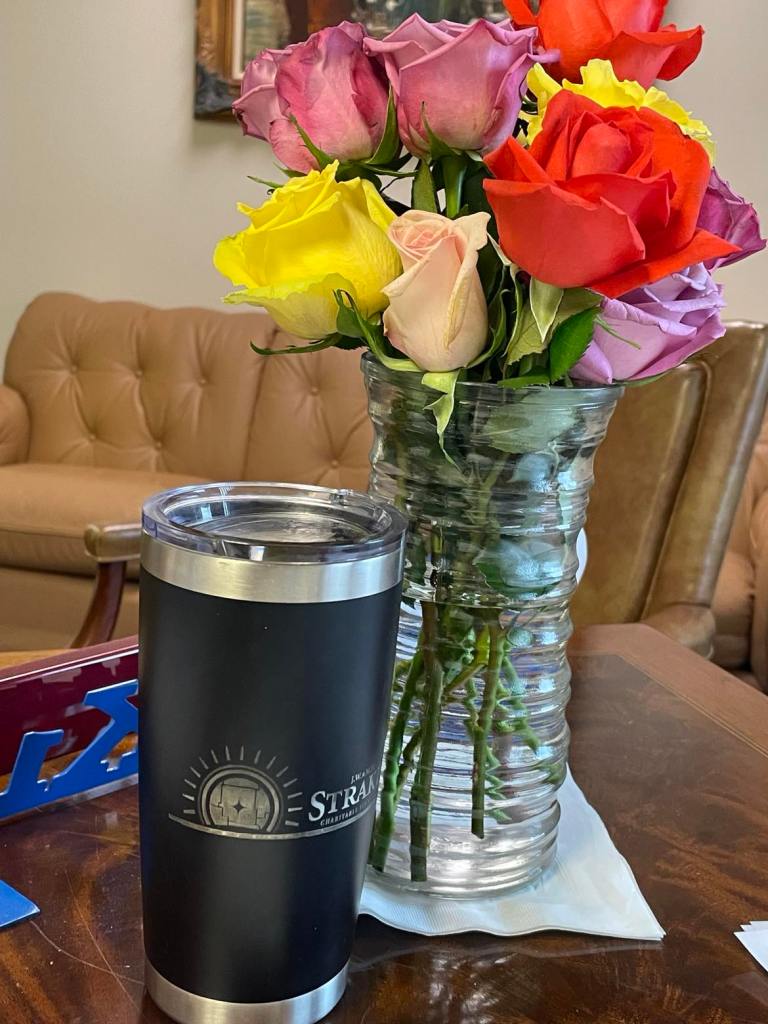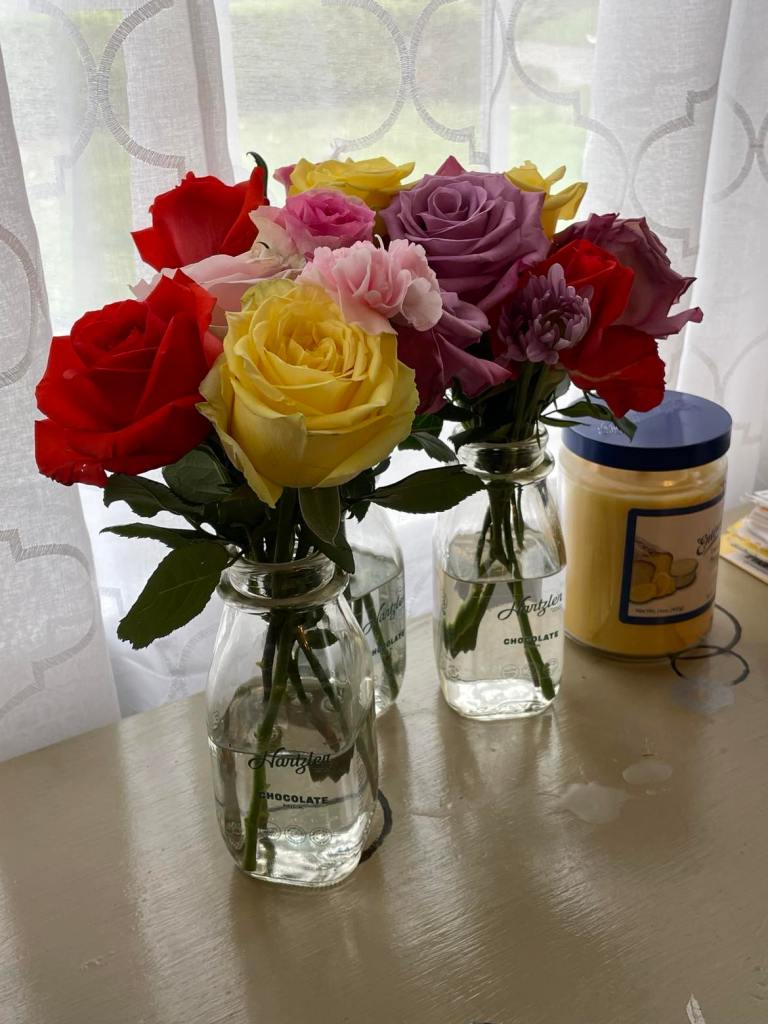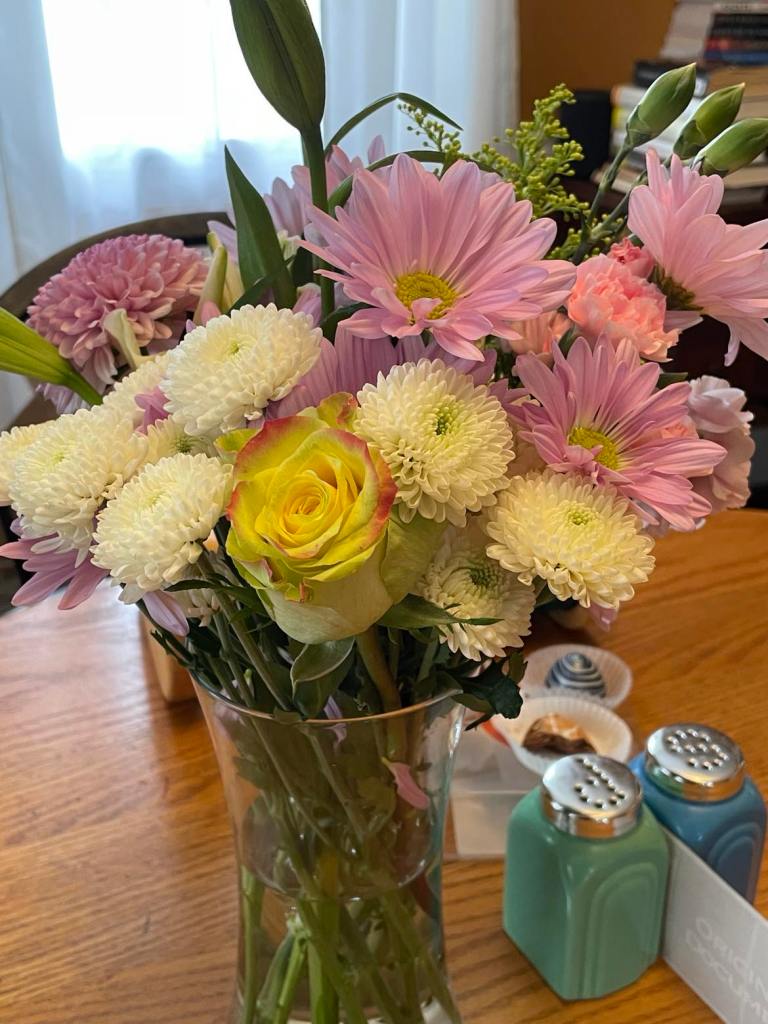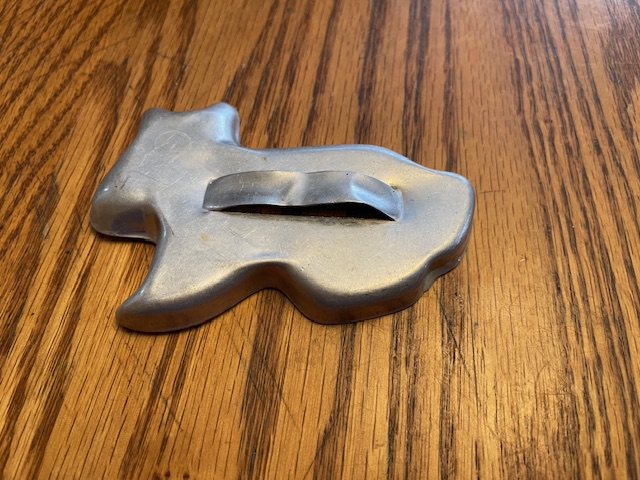Hellbender. The name sparks images in my mind.
**************************
I see the word on a movie poster, featuring, maybe, Matt Damon as Hellbender, the Scourge of the Midwest. Damon is dressed in buckskin, and he’s flailing a vintage rifle above his head, face contorted; he’s looking bent on mayhem.
Lurking in the poster’s background is a grim-faced Ben Affleck, playing a sheriff with a black leather vest studded with a law enforcement star. The blurb reads, “They were best friends, until the law came between them.”
Hellbender: the saga.
****************************
But, errr…not exactly.
I’m thinking of hellbenders lately because we’ve had a couple of work events at the Wilds, an amazing place in Cumberland, Ohio, where a dedicated group of visionaries is saving species from extinction. On the 10,000 acres the Wilds reclaimed from strip-mining, visitors in safari buses can view many creatures , including…
- Two kinds of rhino;
- Zebras with brown stripes
- Banteng;
- Persian onagers;
- Bactrian camels;
- Bactrian deer;
- Pere David’s deer;
- Elands;
- Cheetahs;
- Dholes;
- African painted dogs;
- And giraffes.
All these creatures, a recent safari guide told us, are in danger of extinction…except the giraffes. Jack Hanna said something like this, when the Wilds were being planned, “Great idea, creating a haven to nurture and restore breeds in danger. But you should also have giraffes. Every wildlife safari needs giraffes.” That’s what our tour guide told us, and it makes sense.
Some giraffes are endangered, but, endangered or not, people love to see giraffes.
Now, the Wilds is adding bison to the list of animal breeds they’re saving; we can see bison roaming the Wilds’ hills on our tours.
Wilds conservation teams are working on saving species that don’t show up well on bus-trip safaris, too.
Two of those species are burying beetles and Eastern Hellbender Salamanders.

Image from Wikipedia
**********************************
Hellbender. I hear chains chingling…chains on the heels of scuffed black boots, and chains hanging from the pockets of tight black leather pants. The wearer of those pants wears a black leather vest, too. The vest shows road-wear; on its back, in an arc, “Hellbender” is stitched. Arms sprout from the vest—hard, muscled, hairy, tattooed arms. The right hand flicks a cigarette butt. A hardened face, mustache-d and dew-ragged. Cold eyes that pierce and calculate, as the rider steps away from his hog.
Hellbender: a member of an elite motorcycle gang.
***********************************
Or…an eastern salamander. When the first European people to populate the area that stretches from what’s now southern New York State to northern Alabama, saw these creatures, they thought the salamanders looked like they’d escaped from Hell. They thought the salamanders looked intent on getting back there, too, Dave Tabler wrote, in an article on appalchianhistory.net (an article aptly titled, “It looks like a creature from hell, where it must be bent on returning”).
Photo of Renaissance etching from appalachianhistory.org; salamanders would nest/sleep in logs, and miraculously crawl out when humans used that wood to start a fire (some people thought the salamanders ate the fire, thriving on it.). The word ‘salamander’ means ‘fire lizard”
The settlers saw the salamanders, the largest in the United States (some can reach 30 inches in length, but most are 12 to15 inches long), and thought the beasts were hellbent. It wasn’t a stretch for that to morph into ‘hellbenders,’ which became their official name.
Their scientific name is Cryptobranchus alleganiensis, which means ‘hidden gills.’ Hellbenders breathe through their skin, which crumples into folds—except when they are young, and gilled. By about a year and a half in age, though, the gills have disappeared.
Hellbenders DO have lungs, but they’re not for breathing. (That was proven when, in a bit of scientific inquiry possibly run amok, someone surgically removed a hellbender’s lungs. And it lived, quite nicely, thank you. Scientists believe the lungs are for buoyancy, although hellbenders don’t actually swim much.)
Hellbenders have other names, too. They might be called mud devil, devil dog, and ground puppy. Also, some call them, graphically, snot otters and mud cats. (A mud puppy is a different beast altogether; don’t be using that one to refer to these ones.)
There’s also an offshoot of the species called the Ozark hellbender.
Not all of those names would look good on a road-worn black leather vest.
**************************************
Not to put too fine a point on it, but hellbenders are ugly cusses. And they are rapacious, voracious, eaters. Given their druthers, they eat crayfish; they sleep all day, than at night, they trudge their territories of 30-60 square feet in small rivers and streams, intent on food.
First they’ll eat crayfish; but if crayfish are not in supply, the hellbenders will eat tadpoles, toads, small fish, and water snakes…and other hellbenders. Cannibalistic, they are, munching on smaller adults, or their own—or other’s—larvae and eggs.
They like clean, clear flowing water; they have rough toe-pads that help them navigate the slimy, mossy rocks on a stream’s bottom.
Image from https://www.srbc.gov/our-work/pamphlets/eastern-hellbender.html
Hellbenders are territorial about their little patch; they’ll rouse themselves to attack anything that enters their space, even during their daytime slumbers.
They are not venomous, although their skin secretions might be slightly toxic (don’t, no matter how tempted you might be, fondle a hellbender then rub your eyes), but a hellbender bite won’t kill ya.
And they are listed as “near threatened” and edging toward “close to vulnerable.” The Ozark hellbenders are out and out endangered.
Dams go up, and hellbenders can’t find each other. Clear running waters get foggy with contaminants. Habitats disappear.
**********************************
Why would anyone go to all the trouble of saving a cannibalistic snot otter?
Tabler says hellbenders eat LOTS of crayfish. In fact, if the hellbenders did not eat those crayfish, there’d be problems. The gleaned crayfish population is good for fish that live in streams; the whole balanced ecology benefits the larger ecosystem.
The Wilds is part of the Ohio Hellbender Partnership, which weaves the efforts and communications of the Columbus Zoo and Aquarium and other Ohio zoos, with Ohio State University and other academic entities, and with governmental agencies…all of them working together to insure that hellbenders stick around.
Wilds conservationists harvest hellbender eggs and then nurture them in captivity until the hellbenders can be released back into the habitat from whence they came. The Wilds’ hellbender eggs come from West Virginia; when ready for the adventure, that is where they return. Other groups in the consortium release THEIR mature hellbenders into Ohio rivers and streams.
Photo from https://www.thewilds.org/conservation/hellbenders
The released salamanders are tagged, and the Hellbender Partnership has been able to evaluate the effects of their interventions. Field teams have established that hellbenders who’d been started at the Wilds and released back into natural habitats have been reproducing.
And that’s a very hopeful thing for hellbender futures.
*********************************
Action to save the species happens in other places, too. One of the promising physical solutions is to remove dams where dams don’t need to be; allowing the hellbenders to meet and mingle has proven to be an effective succession plan.
**************************************
Hellbenders. One very important reason I don’t plan to stick my gnarly bare feet into the Muskingum River, or the Licking River, anytime soon—or anytime at all, actually.
But just because I don’t like the way they look or treat their babies, just because I don’t want to feel them treading on my bare feet, that doesn’t mean the critters aren’t important. If we lost those hefty mud devils, we’d lose an ecological balance, starting a spiral whose end is not fun to imagine.
And, we’d lose a significant part of this region’s fascinating animal life.
So good work, I say, to all the members of the Ohio Hellbender Partnership—good work and keep it up!
When I take my Wilds tour, though, I’m happy to see the striped-y baby zebras, and the gangly giraffes, and the lumbering baby rhinos, and the lazy cheetahs who are not at all fussed at a field crew member weed whacking their enclosure a mere thirty feet from where they sleep.
I don’t need to see the hell benders. I’m just happy someone’s making sure they’re here to stay.
*************************************
Resources…
Recent jury-reviewed article in the ESJ (Ecological Society of Japan’s journal) : https://esj-journals.onlinelibrary.wiley.com/doi/full/10.1002/1438-390X.12171
https://www.nature.org/en-us/get-involved/how-to-help/animals-we-protect/hellbender-salamander/









